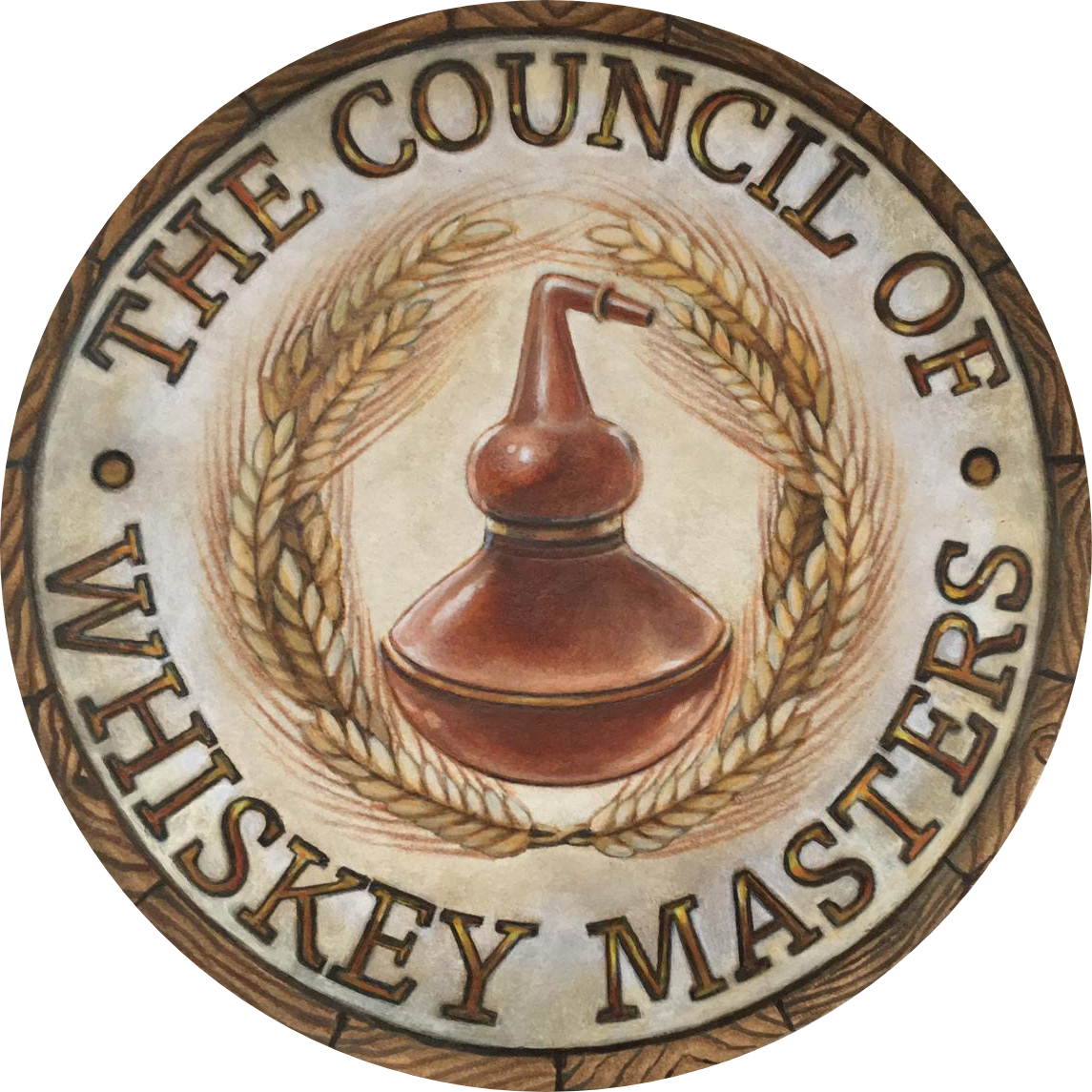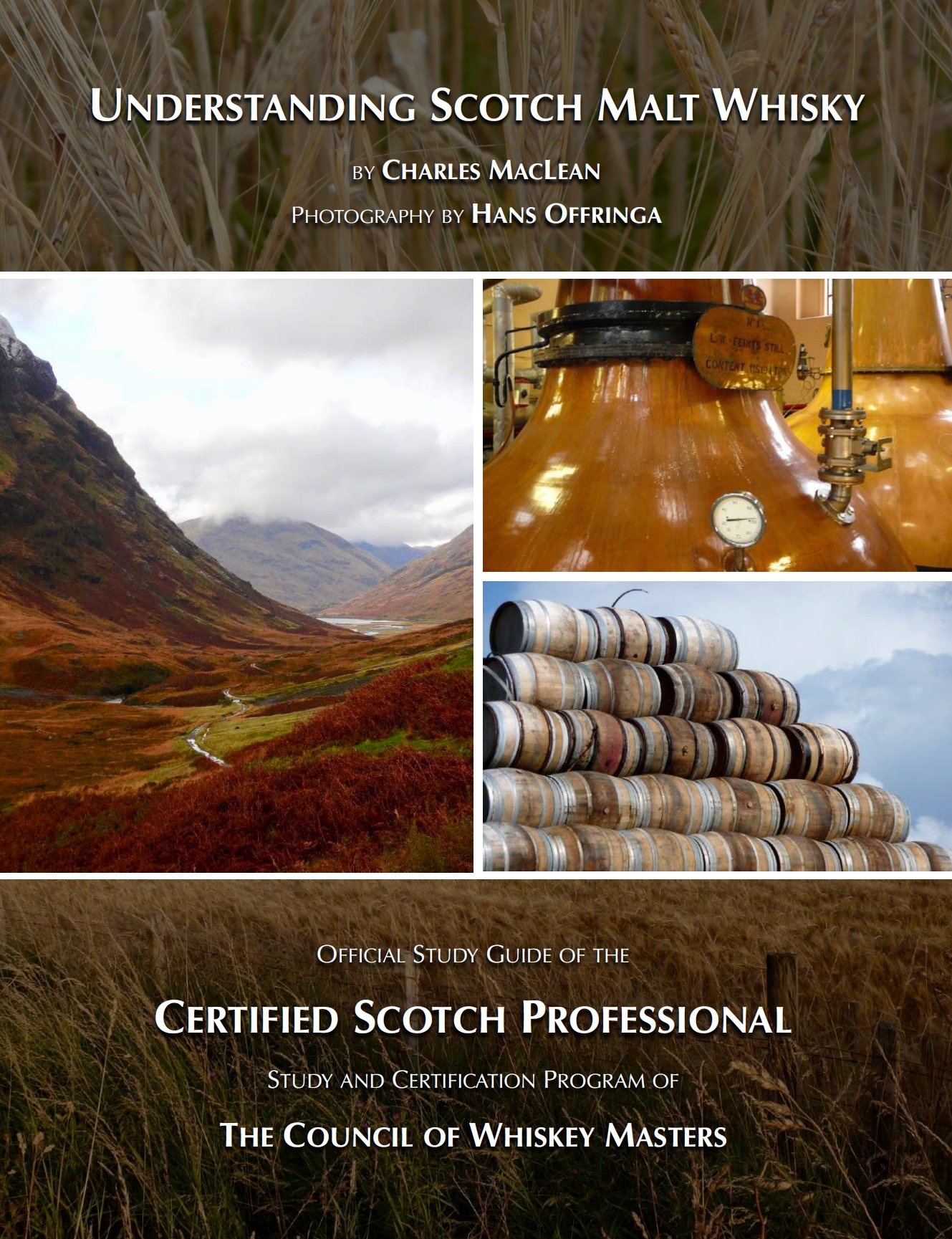Master the fascinating world of Single Malt Scotch:
Become a CERTIFIED SCOTCH PROFESSIONAL.
(go HERE if you want to pursue the Bourbon track first)
Program Benefits & Features
Earning the Certified Scotch Professional™ designation grants the life-long privilege to carry the title and use its postnominals, “CSP”. Upon passing the exam, candidates receive our printed diploma and lapel pin, both in digital as well as physical versions.
The Council of Whiskey Masters sets the highest global standard for knowledge and competence in Single Malt Whisky appreciation. Its study program and certification exam are the gold standard in the industry. Successful candidates enjoy a wide range of career and networking opportunities as well as a deep understanding of the beverage, based on the best body of knowledge available today.
The CSP program is completed 100% in remote format, removing all barriers for candidates around the globe. Studies and examination are supported efficiently by our competent and responsive office team in Los Angeles, California. Note, our certification courses are also a very popular gift idea!
Become a Certified Scotch Professional by joining our study & certification program today!
Curriculum for the Certified Scotch Professional™ (CSP) Program
The History of Distillation
Early Development in Europe
Beginnings of Whisky Culture
Malt Whisky History of Scotland
The Rise of Scotch
Malt Whiskey Rediscovered
Modern Scotch Production Methods
The Role of Water
The Main Ingredient: Barley
Blending and Single Malts
Yeast Selection and Function
The Malting Process
A Scottish Choice: Peat
Options in Mashing
Fermentation Details
Distilling Standards
Wood Selection
Aspects of Maturation
Warehousing and Storage
Our official CSP study guide. Written by Charles MacLean, the most respected whisky expert alive
Scotch Appreciation Methods
Sensory Evaluation
Systematic Tasting Setup
Tasting Procedures
Scotch Tasting Descriptors
The Whisky Regions of Scotland
Highlands
Speyside
Lowlands
Islands
Islay
Campbeltown
Enrollment Requirements & Process
The Certified Scotch Professional (CSP) program covers a comprehensive and rigorous curriculum. There are no prerequisites or special requirements to enroll in the program, the Council welcomes candidates of all backgrounds.
Beginners will find the program accessible without prior knowledge, and experienced professionals or hobbyists will find the depth of the curriculum demanding and satisfying.
Enrollment in the CSP study program costs $395, non-refundable. This fee includes all necessary study materials, the online exam, plus diploma and lapel pin upon passing. The exam is challenging, but fair: ~74% of the candidates pass on first attempt. Retake fee is $295.
A parallel Certified Bourbon Professional (CBP) track is also available, HERE. Passing either the CBP exam or the CSP exam constitutes Level 1 certification, which is prerequisite for Level 2, the Certified Whiskey Specialist (CWS).
Receiving & Reading the Study Guide
What happens after you enroll? You will get a confirmation email from us swiftly, usually within a few hours of signing up. It will include a link to the Council’s study guide, called “Understanding Scotch Malt Whiskey”, and more information. The Study Guide is ideal for tablets, and can also be printed easily if you prefer reading on paper.
Your study guide is structured to support the study curriculum outlined above; all exam questions will be exactly based on this document. We use a well written and illustrated study guide that many thousands of Scotch experts and students have rated highly. The expected study and preparation time for this exam is between 60 and 90 hours, depending on prior experience.
Our Study Guide is well written, up-to-date, illustrated, and very enjoyable to read and study.
Scheduling & Taking the Exam
Once you are ready to take the exam, you may select and self-schedule a time slot on our website. Exams are offered several times each month on Fridays and Saturdays, with convenient time slots available for all global time zones. A calendar invitation with all important details will be emailed to you immediately upon scheduling
Exam results will reach you via email within two days of taking the exam. The exam consists of 100 multiple-choice questions, and it takes up to 60 minutes to complete. You must correctly answer at least 75% of the questions to pass the exam.
Exam protocol:
The exam may be taken online, in a browser window, using a laptop or desktop computer. The exam is entered through a link sent by the Council on exam day.
Candidates may be located anywhere in the world, but reliable internet and phone connections are required. Anti-cheating methods are in place and are enforced.
No study materials or other persons are permitted in the room during an exam.
Candidates receive an email with the exam link a few hours in advance of the scheduled appointment time.
Note that the Council enrollment may expire if a candidate neither takes nor schedules the exam within 2 years of enrolling for that level.
Receiving the Diploma & Pin
After passing of the exam, you will receive an email that includes a PDF version of your diploma, together with an e-version of the lapel pin that can be used in your email signature. Shortly after, we will also mail your beautiful copper lapel pin from our Los Angeles office.
Upon request and without extra charges, we can also mail out your printed diploma, on high-quality stationery suitable for framing.
Many successful candidates take a next step and enroll in one of our other exams, building an impressive portfolio of tasting expertise that can shape their careers and enhance their personal enjoyment. Take your first step toward certification today!
Need advice, have specific questions, or just want to gather info about the landscape of whiskey credentials?
Our dedicated office team of whisk(e)y professionals and industry insiders can help!
Provide your phone number to request a callback, or enter your email/questions to get a written reply.
Representative Sample Questions
Question 1: Order the following distilleries by their traditional use of peat, from lightest to heaviest: (1) Lagavulin (2) Talisker (3) Laphroaig (4) Glenmorangie.
A. 1, 3, 4, 2
B. 4, 2, 1, 3
C. 3, 2, 4, 1
D. 2, 4, 3, 1
Question 2: Which of the following is not a desirable contribution from oak to Scotch aging?
A. Introduction of sulfur
B. Evaporation
C. Coloration
D. Imparting of flavor
Question 3: Which of the following is not a step in the malting process?
A. Kilning
B. Germinating
C. Tunning
D. Steeping
Question 4: Which of these terms refers to the 40 gallon size container traditionally used?
A. Barrel
B. Puncheon
C. Hogshead
D. Octave
Question 5: Which selection is accurate about the relationship between first and second distillation?
A. Some leading distilleries omit the second distillation for their main bottling.
B. The second distillation begins when the alcohol from the first distillation is at 5% or more.
C. The second stage further concentrates and purifies the spirit.
D. Only the second distillation uses worm tubs.







